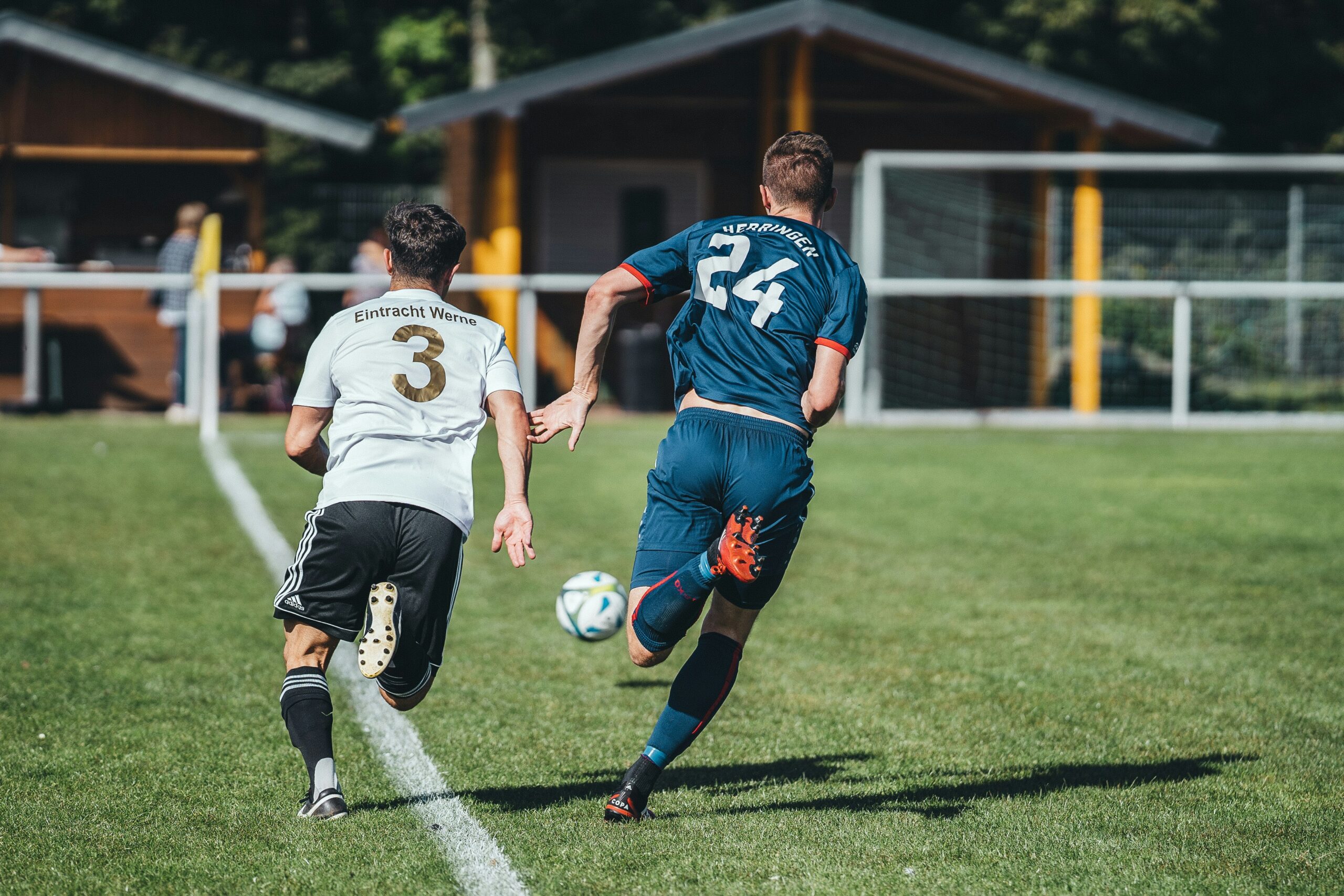Small-sided games use fewer players on smaller fields than regular 11v11 matches. They create a real game environment while keeping every player busy and involved. Instead of standing in line waiting for a turn, players get tons of touches and make quick decisions throughout the session.
This guide shows you how to set up these training games and gives you several options to use at your next practice. Whether you coach young players or older athletes, these games will improve skills while keeping practice competitive and fun.
How to Set Up and Play Small-Sided Games
Field Sizes That Work
Getting the field size right matters more than you think. Too big and players get tired running around empty space. Too small and they can’t make good decisions.
For younger players (ages 6-8), use fields around 15×20 yards for 3v3 games. Older kids (ages 9-12) need more space—try 25×35 yards for 5v5. High school players can handle 35×50 yards for 6v6 games.
Make the field bigger if you want players to work on longer passes and runs. Make it smaller when you want quick passing and lots of touches on the ball.
Player Numbers and Equipment
The best formats are 3v3, 4v4, and 5v5. Here’s why each one works:
- 3v3: Every player touches the ball constantly and stays involved
- 4v4: Good mix of skill work and team tactics
- 5v5: More complex but still gives players plenty of action
Keep your equipment simple. You need cones to mark the field, colored vests so teams know who’s who, and small goals or cone goals. Pop-up goals work great, but two cones spaced 4-6 feet apart do the job too.
Time and Rotations
Run each game for 10-25 minutes, then give players a 1-2 minute break. Short games keep the intensity high and prevent players from getting sloppy when they’re tired.
Change up the teams every few games. This keeps things fresh and gives players different challenges. If someone’s dominating, split them up. If a team struggles, mix in a stronger player.
Small-Sided Game Ideas
3v3 to Goal
This is your bread and butter game. Set up a field with small goals on each end and let teams play. Players learn to pass under pressure, move to help teammates, and finish in tight spaces.
The magic happens because players can’t hide. With only two teammates, everyone has to get involved in both attacking and defending. They learn to switch quickly from trying to score to trying to stop the other team.
End Zone Game
Instead of shooting at goals, players score by dribbling the ball into the opponent’s end zone. Mark 5-yard deep zones at each end of the field with cones.
This game builds confidence in 1v1 situations. Players learn to take defenders and practice passing without immediately aiming for a goal. They get better at close ball control when defenders pressure them. The defending team learns to work together to protect their end zone.
Numbers Game
Have all players start on the sidelines. Call out a number like “2” and “7” and two players assigned to those numbers from each team sprint into the game. Play until someone scores or the ball goes out, then call a new number.
This keeps everyone alert and creates different scenarios. Sometimes it’s 1v1, sometimes 3v3. Players learn to handle situations where they’re outnumbered or have an advantage. It also builds fitness since players sprint on and off the field.
Simple Variations
Once players get comfortable with the basic games, add small challenges:
Two-touch maximum makes players think faster and improves their first touch. One-touch finishing helps shooting technique. Playing with smaller goals improves accuracy.
You can also try man-marking where each player follows one opponent around the field. This teaches defensive responsibility and helps players understand spacing.
Adding Specific Focus Points
Target Specific Skills
Want better passing? Give teams a bonus point if they complete five passes before scoring. Need better first touches? Award extra points when players receive the ball facing forward.
For defensive work, give points for winning the ball in the attacking half. This teaches players to pressure opponents right away instead of backing off.
The key is picking one thing to focus on per session. Don’t try to fix everything at once or players get confused about what matters most.
Track Improvement
Keep it simple when tracking progress. Count goals, successful passes under pressure, or how many times players win the ball back quickly.
You don’t need fancy stats. Just notice if players are making better decisions week to week. Are they passing earlier when pressured? Do they press together as a team? Are first touches getting cleaner?
Write down a few quick notes after each session. Over time, you’ll see patterns in what players need to work on most.
Conclusion
Small-sided games make practice more active and game-like than traditional drills. With just cones, vests, and balls, you can create situations where players constantly make decisions and touch the ball. These games work because they feel like real soccer while developing the skills players need most.
The best part is how adaptable they are. Change the field size, adjust the rules, or modify the objectives based on what your team needs to improve. Players stay engaged because they’re always involved, and you get better results because the training matches what happens in actual games.
Athletes Untapped: Personalized Soccer Development
Want fresh soccer training ideas designed for your specific needs? Athletes Untapped connects players with private coaches who create customized small-sided games and skill-building sessions. Browse our soccer coaches to find certified trainers who keep practices fun while building the technical and tactical skills needed to excel on game day.




